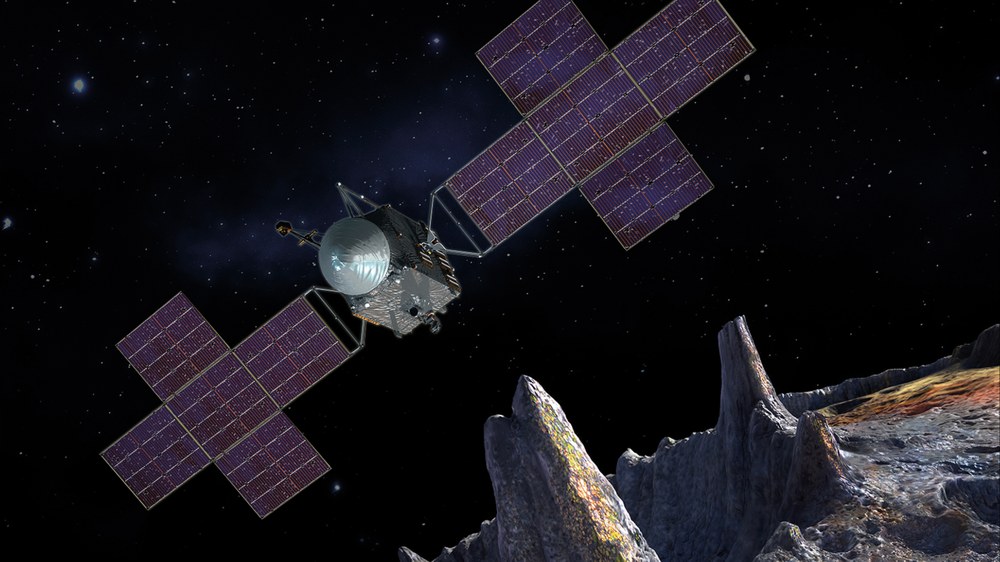Psyche

Psyche is a NASA discovery mission to the metallic asteroid (16) Psyche. Psyche was launched on 13 October 2023 from NASA’s Kennedy Space Center in Florida. The arrival at the main belt asteroid is planned for 2029. Psyche has a distance to the Sun of 2.91 AU, a volume of 279 km ⨯ 232 km ⨯ 181 km and a density between 3.5 g/cm3 and 4.1 g/cm³. Its density, radar reflections and thermal inertia suggest that Psyche is composed of a mixture of rock and metal with a 30% to 60% metal content. A spectral absorption at 0.9 μm indicates a silicate component. Therefore, Psyche is believed to be the core of a previously differentiated asteroid that was destroyed by subsequent collisions. Psyche not only offers the possibility to examine an asteroid, but also allows a view into the interior of a protoplanetary body. It is believed that Psyche can provide clues about the conditions during the first 100 million years of the formation and differentiation of a protoplanet.
Therefore, the most important scientific goals of the Psyche Mission are the investigation of the asteroid with regard to the evolution of the physical and astronomical conditions and processes from the beginning of the formation of the solar system, the investigation of the differentiation of planetesimals and the determination of the connections between asteroids and meteorites.
DLR's Institute of Planetary Research supports the mission in the planning and evaluation of stereo images and will create cartographic products such as mosaics and digital terrain models, which are required for a detailed study of Psyche. Among other things, the institute will enable, coordinate and perform the geological evaluation of the data. Our expertise in the geology of planetary surfaces and the processes that shape them is particularly noteworthy in the scientific analysis and is firmly integrated in the international Psyche Science Team.
Scientific Participation of the DLR Institute of Planetary Research
- Planning and processing of the stereo-camera data
- Analysis of geological surface composition
